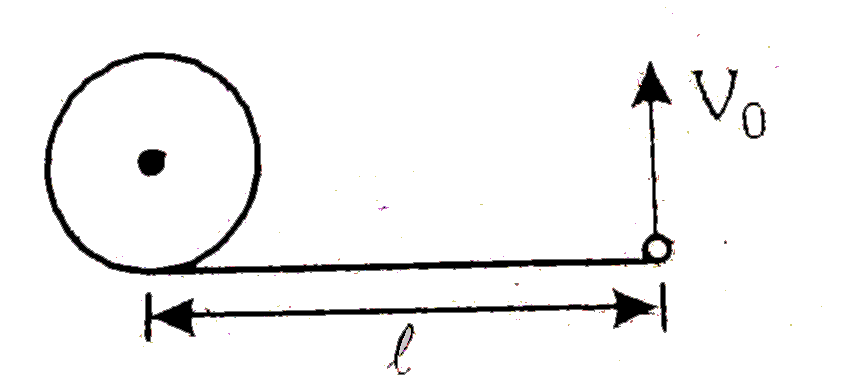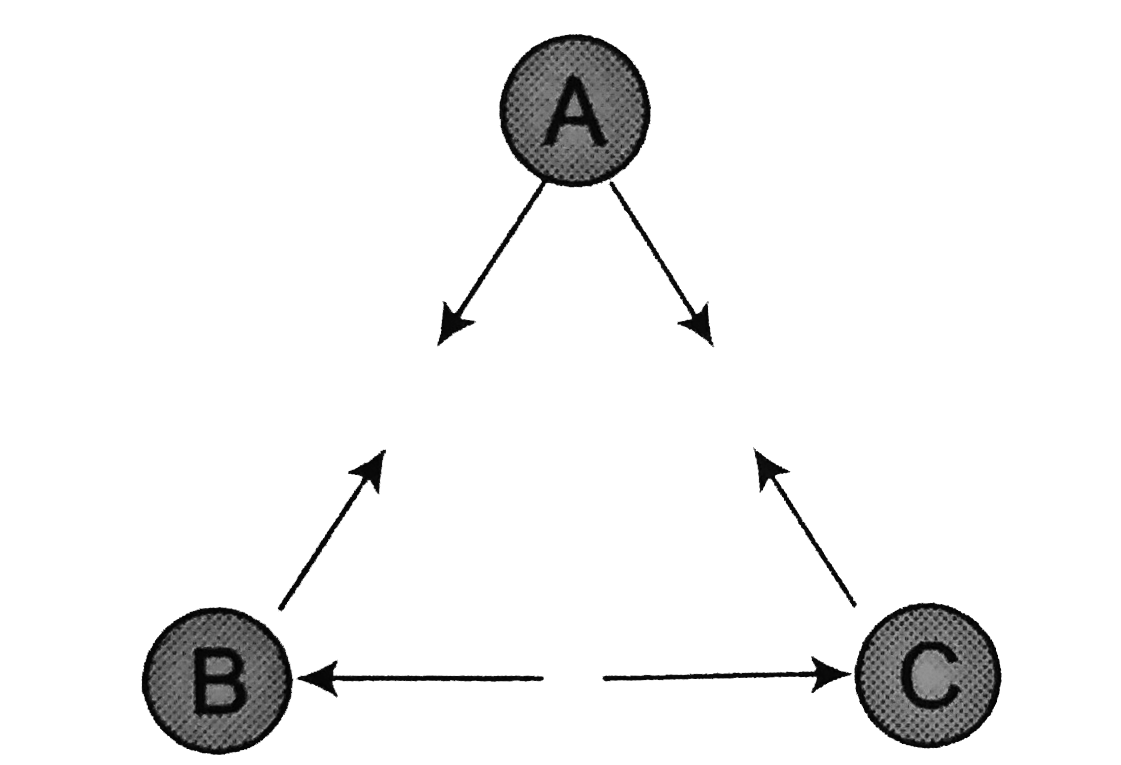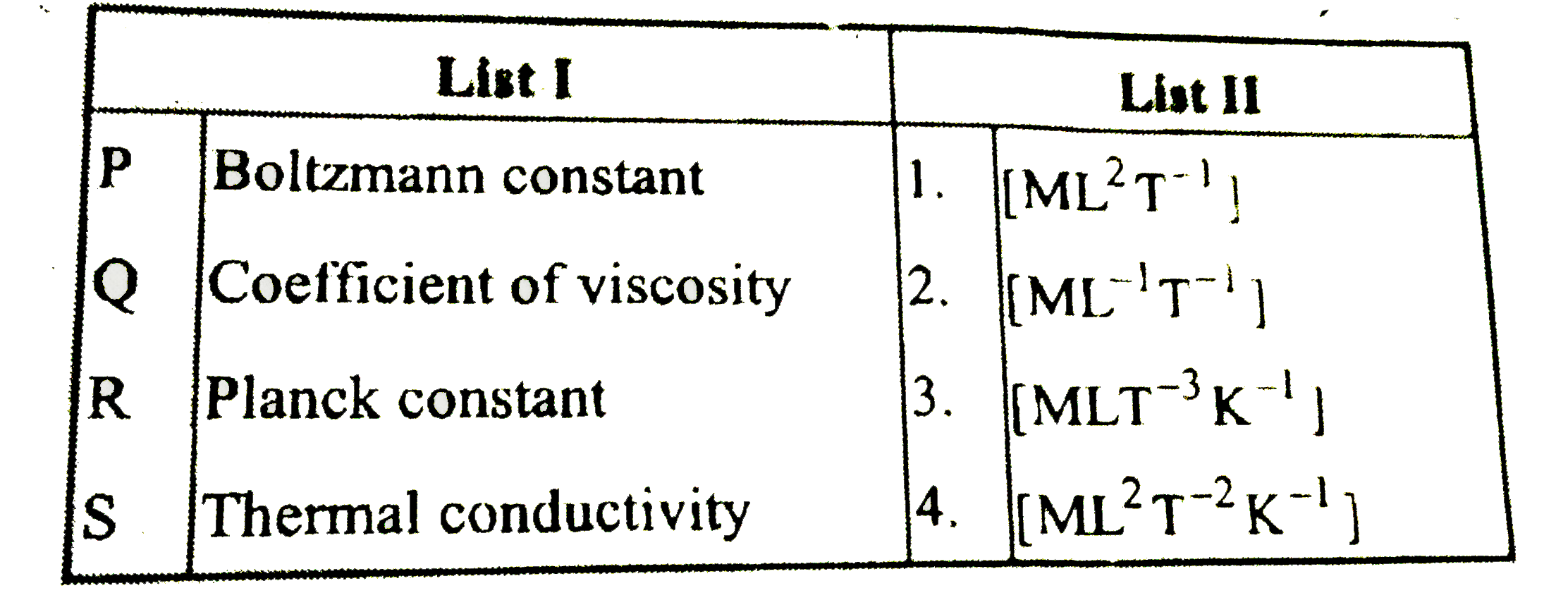For the reaction:
N2+3H2⇔2NH3
If the initial concentration of N2 and H2 are a and b moles per litre and x moles per litre of ammonia is formed at equilibrium, what is the equilibrium concentration of hydrogen?Solution in Gujrati
(b−3x)
(3b−3x)
(b−3x2)
(b−23x)
The correct Answer is:C
N2+3H2⇔2NH3
amolesbmolesomoles
(a−x2)M,(b−3x2)MxM
Topper's Solved these Questions
- TEST PAPERSBOOK - ALLEN CHAPTER - TEST PAPERSEXERCISE - Part-1 Physics
15 Videos
- TEST PAPERSBOOK - ALLEN CHAPTER - TEST PAPERSEXERCISE - part-2 physics
73 Videos
- TEST PAPERSBOOK - ALLEN CHAPTER - TEST PAPERSEXERCISE - PAPER 2
60 Videos
- TEST PAPER 4BOOK - ALLEN CHAPTER - TEST PAPER 4EXERCISE - PHYSICS
45 Videos
- UNIT & DIMENSIONS, BASIC MATHS AND VECTOR BOOK - ALLEN CHAPTER - UNIT & DIMENSIONS, BASIC MATHS AND VECTOR EXERCISE - Exercise (J-A)
7 Videos
Similar Questions
A quantity of 2 mole of helium gas undergoes a thermodynamic process, in which molar specific heat capacity of the gas depends on absolute temperatureT , according to relation:
C=3RT4T0
where T0 is initial temperature of gas. It is observed that when temperature is increased. volume of gas first decrease then increase. The total work done on the gas until it reaches minimum volume is :-
View SolutionA bead is connected with a fixed disc of radius R by an inextensible massless string in a smooth horizontal plane. If the bead is pushed with a velocity v0 prependicular to the string, the bead moves in a curve and consequently collapses on the disc. Then

View SolutionThe diagram shows the arrangement of three small uniformally charged spheres, A,B and C. The arrow indicate the direction of the electrostatic forces acting between the spheres (for example, the left arrow on sphere A indicates the electronstatic force on sphere A due to sphere B). At least two of the spheres are positively charged. Which sphere, if any, could be negatively charged?

View SolutionTwo forces, each of magnitude F have a resultant of the same magnitude F. The angle between the two forces is
View SolutionMatch List I with List II and select the correct answer using the codes given below the lists :

View SolutionWhat will be the effect on the equilibrium constant for the reaction N_(2)+3H_(2)hArr2NH_(3), DeltaH=-22.4 kcal, when a. Pressure is increased b. Concentration of N_(2) is increased and c. Temperature is raised at equilibrium ?
View SolutionFor the reaction, N2+3H2⇔2NH3, in a vessel equal moles of N2 and H2 are mixed to attain equilibrium. At equilibrium:
View Solution1 mol of nitrogen is mixed with 3 mol of hydrogen in a 4L container. If 0.25% of nitrogen is converted to ammonia by the following reaction
N2(g)+3H2(g)⇔2NH3(g)
then calculate the equilibrium constant Kc in concentration units. What will be the value of Kc for the following equilibrium?
12N2(g)+32H2(g)⇔NH3(g)
View Solution1 mole N_(2) and 3 moles of H_(2) are taken in a 4 litre vessel and heated at T Kelvin temperature till following euilibrium is reached :- N_(2)+3H_(2)hArr2NH_(3) At equilibrium 0.25% N_(2) is converted to ammonia. Find equilibrium constant of reaction.
View SolutionIn the reaction, N_(2)+O_(2)hArr2NO , the moles//litre of N_(2),O_(2) "and" NO respectively 0.25,0.05 "and" 1.0 equilibrium, the initial concentration of N_(2) "and" O_(2) will respectively be:
View SolutionIf the pH of a solution is 2, the hydrogen ion concentration in moles per litre is
View SolutionA mixture of 1 mole of N2 and 3 moles of H2 is allowed to react at a constant pressure of 100 bar. At equilibrium, 0.6 mole of ammonia is formed. Calculate the equilibrium constant for the reaction N2+3H2⇔2NH3.
View SolutionFor the reaction N_(2)+O_(2)hArr 2NO at equilibrium number of moles of N_(2),O_(2) and NO pressent in the system per litre are 0.25 mole, 0.05 moles and 1.0 mole respectively What will be the initial concentration of N_(2) and O_(2) respectively
View SolutionIn the process N_(2)+3H Leftrightarrow 2NH_(3) , the initial concentration of Nitrogen and Hydrogen are one mole per litre and 3 moles per litre respectively. The equilibrium constant of the reaction is x. Then K_(C)" for "2NH_(3) Leftrightarrow N_(2)+3H_(2) is
View SolutionOne mole of N2 and 3 moles of H2 are mixed in a litre flask. If 50%N2 is converted into ammonia by the reaction.
N2(g)+3H2(g)⇔2NH3(g)
then the total number of moles of gas at equilibrium is :
View SolutionA mixture of 2 moles of N2 and 8 moles of H2 are heated in a 2 lit vessel, till equilibrium is established. At equilibrium, 04 moles of N2 was present. The equilibrium concentration of H2 will be
View Solution
